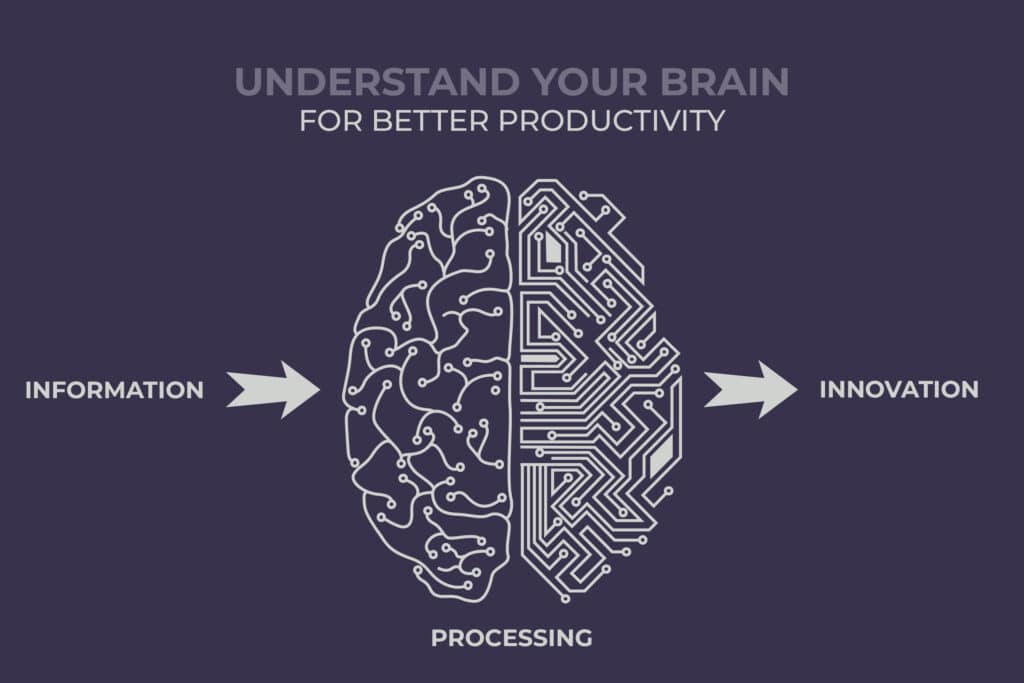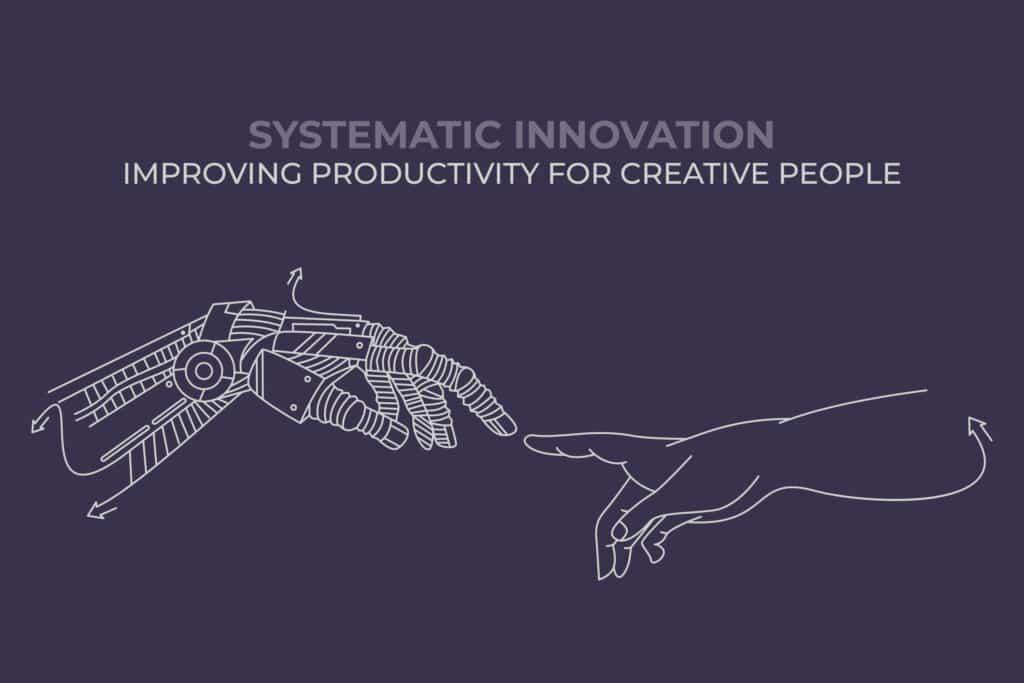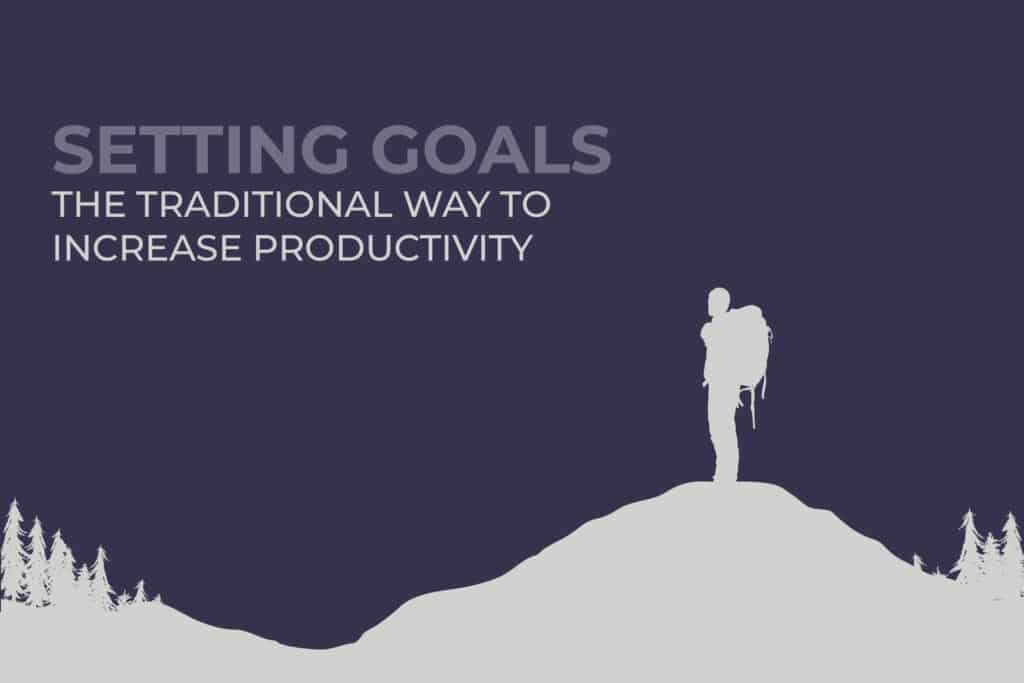The dilemma of productivity is one of the most significant issues that face individuals in today’s world.
Often on social media, I see posts, videos, and memes about people’s struggle with procrastination. With further research into the issue, I found that almost 20% of adults procrastinate chronically and about 80% of college students consider themselves procrastinators!
Whether you’re a professional looking to improve your performance at work or a student looking to get better grades and gain more experience during your learning years, time can fly by without getting much done and, day after day, the growing feeling of unproductivity can consume you and even affect your mental health with the rising stress levels.
The internet is filled with tips on being productive but, let’s face it, tips alone will not solve such a profound problem. Only a complete framework with a changed mindset can be the right approach to being more productive and getting over the evil monster that is procrastination.
Yet still, there is no one way or frame of mind to increase productivity. This is why in this post I’m exploring two different approaches to becoming more productive and, subsequently achieving more success in anything you choose to do in life.
Understand Your Brain for Better Productivity

In his book “Building a Second Brain”, Tiago Forte, the productivity expert, explains an important concept about the human brain that seems to slip all of our minds. After reading this book and researching the human brain functions, I found out a concept that most people miss which is that the human brain is a processor, not a storage space! In other words, no matter how hard you try to strengthen your brain functionality by memorizing things, you can only go so far before forgetting others or affecting your brain’s overall capacity to memorize. The reason for this is that the human brain is designed to create and process ideas, not to be a phone book or a hard desk.
So, the methodology of Forte’s Building a Second Brain revolves around emptying the storage space of your brain systematically by keeping store-worthy information out of your head whether by writing them on a piece of paper or saving them in your phone, to allow your brain the chance to use its full capacity for its main job: processing.
In a workshop I attended on productivity, the coach suggested a method that I found most beneficial for my idea-filled head. The method is that once you get an idea, you write it on a piece of paper and keep this paper in a box, let’s call it an idea box. Then, every once in a while, you go back to this box where all of your brilliant ideas are safely kept and were not washed away into oblivion by the stresses of the day, you choose one of the ideas and start working to make it a reality.
This method is absolutely brilliant to increase your sense of productivity. Your head is not over-crowded by thoughts of what can be achieved, and your future achievements are safe and sound in your idea box to be executed when their time comes. From trying a new food recipe to launching a new product or a startup, my idea box never failed me in both introducing new creations into life and elevating my sense of achievement and productivity.
Systematic Innovation: Improving Productivity for Creative People

Productivity can be an even bigger issue for creative people whose work depends on innovation as being productive in creative endeavors depend almost completely on getting new ideas. So, when there are no new ideas or no innovative way to execute an idea, that’s when creative people get stuck and their productivity takes the biggest hit.
Thankfully, there is a solution for this issue that I was able to conclude from David Allen’s book, Getting Things Done, where ِAllen established a methodology for systematic innovations.
The methodology that Allen developed depends on a framework of 5 steps to assist you in organizing your thoughts and the ideas that you get.
No matter how chaotic it seems inside your head, applying this framework will help you find order within that chaos:
- Write down the idea, thought, or notion as soon as it comes to your mind on a piece of paper.
- Take a second look at the idea after writing it down to evaluate whether it should be executed right away or postponed. This step will show you that some ideas are not worth holding onto.
- Designate a place like a box or a drawer to keep the ideas that you see fit to be saved for later.
- Revisit your “idea box” to re-evaluate the ideas you’ve kept there and decide which of them to be executed and which to be discarded.
- Time to take action! While you keep your Idea System going consistently, actively work on actualizing doable ideas and enjoy the achievements!
After that, all you have to do is systematically follow the required tasks accomplishing your ideas one by one, and, voila, you have increased your creative productivity without going through the agony of waiting for inspiration!
Setting Goals: The Traditional Way to Increase Productivity

The very first advice anyone would give you to work on bettering your productivity rate is to set a goal and keep that goal in front of your eyes as you take small steps towards it. In the end, having an end goal will for sure motivate you to do the necessary tasks to achieve it.
The problem with this approach is that it can result in confusion for dreamers or visionary people who have several goals or get many ideas and get lost between them or end up in a Buridan’s donkey sort of paradox. If you’re not familiar with the term, let me tell you the not-so-fun hypothetical story that the 14th-century philosopher Jean Buridan told about a hungry and thirsty donkey placed at the same distance from water and hay (food) and Buridan’s conclusion that the donkey would die of hunger and thirst because it would be unable to decide which way to go first.
The same can happen with a person’s productivity if he/she has multiple goals. This person can be paralyzed and unable to sort his/her priorities leading to having zero productivity despite having not one, but many goals.
However, this dilemma is not proof that setting a goal is bad for your productivity as it can be simply resolved by having one big-picture goal, for example, what do you want to have achieved after 10 years?
So, you start by setting goals within a specific time frame. First, you set an ultimate goal that you want to achieve after 10 years. Then you divide that into smaller goals: 5 years, 2 years, 1 year, monthly, weekly, and daily.
This way, you can overcome the multiple-goals issue as you can fit them within your big-picture plan and you can also pivot the small-goal or short-period plans according to any circumstances that may come up without losing your way or wasting anything that you’ve already achieved just because an unexpected event occurred.
Setting Intentions: The Road Less Traveled
Despite the fact that setting goals, short and long-term, is motivating for many people, I know that this approach will not work for everyone. The reason is that people are simply not the same and the one thing that works for me, for example, will not work for someone else.
Just because setting goals help make some people more productive, does not mean you’re a failure because the same method doesn’t work for you. This is why I want to discuss a different method that can be either mixed with setting goals or used on its own to have a more productive life, which is setting intentions.
Setting a goal, even a short-term one, without the proper intentions can make you feel worse about your productivity if you’re unable to achieve that goal for some reason. This is where the intention comes in to set the record of your mind straight.
Let’s say you have a goal to ace an interview for your dream job and you’ve prepared everything needed for this interview to go well. You also need to set the intention that no matter what the outcome of the interview is, you’re going to have a positive attitude about it, you’d be receptive and flexible enough to understand the interviewer’s point of view.
This way, you can avoid being fixated on the outcome of the interview and, by extension, the goal itself, and focus on the process and the experience which will give you much more value than focusing solely on the outcome even if you nailed the interview and got the job.
Setting intentions is also a perfect approach for those who don’t find goal-setting helpful in being more productive. When you set the intention to live an experience in a certain way that allows you to notice its details, you find that the smallest part of those details will encourage you to do the work and, subsequently, be more productive.
To put this in the perspective of building a system for your productivity, setting intentions can be the building block of your productivity system where you develop productive habits based on your intentions such as following a sleep schedule or following the Pomodoro Technique at work. Setting the intention and following through with applying the habit to your life will lead to your goals being achieved without keeping your focus only on the goal itself but by changing your mindset to focus on activities and lifestyle that result in more productivity.
A Roadmap to a More Productive Life
Whether you’re following a goal or an intention, the endgame here is to be more productive and increase your overall output. This can be a tricky process as we lose sight of the big picture because of small obstacles and frustrations of everyday hustles.
This is why it’s crucial to trace your progress to give yourself an incentive along the way. Developing a roadmap will allow you to have visual proof of your productivity progress and this roadmap can be done in several ways using one of the many apps and tools available online.
In this section, let’s take a look at my top picks of tools and apps to improve productivity.
Top 5 Tools for Productivity Management
Notion
Notion is one of the best and most diverse productivity applications that you can use to manage teams and projects, or even as a workspace for just you. At first, you’ll need to spend some time familiarizing yourself with the basics to determine how you want to use Notion to manage your time and tasks. The idea of Notion is that it’s a set of building blocks that you can use to build whatever productivity framework you want. You can think of it as your management lego and you can create almost anything you can think of to manage your time and project with it.
This is why Notion is perfect for creative people as it gives them high flexibility in how they want to keep track of their tasks and progress.
Notion enables you to create and manage teams, documents, websites, and databases, in addition to having ready templates for project management tools such as roadmaps.
Special Features:
- Chat
- Centralized Meeting Agendas
- Import/Export (Integration with other platforms)
- Document Collaboration
- Mobile App
TickTick
TickTick is another one of my personal favorite productivity apps. In addition to its clear and concise task management features, it has a Focus Stopwatch feature that allows you to follow the Pomodoro Technique to increase productivity by diving into a task for 25-30 minutes without interruption, then taking a 5-minute break.
TickTick is the perfect time and task management tool for procrastinators as it allows you to set a deadline for each task with a pop-up reminder that can be repeated several times to make sure that you get the task done.
Special Features:
- Adding Tasks Using Voice Input
- Import Tasks from Email
- Use Siri/Quick Ball to Add Tasks
- Date/Time Deadlines
- Annoying Alert (Multiple reminders)
Google Drive
If you’re a professional in today’s market and haven’t heard of Google Drive, it’s time to resolve this huge problem!
Google Drive is not only for cloud storage as many people believe. The Drive allows you to share and co-edit documents with other Google users, you can chat with them inside the document to brainstorm or discuss ideas, and you can connect multiple computers to have a complete ecosystem much like Apple’s. Using Google Drive is an essential task for any employee in any corporate. So, this mention is not a recommendation as much as it is an important app to be familiar with and know how to use professionally.
Special Features:
- Convert PDF to Word and vice-versa
- Edit Documents Offline
- In-Document Chat & Meetings
- Version Control, Comments, & Suggestions
- Complete Office Tools
Zapier
Zapier is a workflow management software and the way I like to describe it is the “One app to rule them all, one app to find them, one app to bring them all, and in the darkness bind them”!
If you’re a LOTR fan, you’ve already guessed that Zapier integrates over 5000 apps to have all of your data and notifications in one place. Facebook, Trello, Google Drive, Gmail, Slack, and Mailchimp are a few of the thousands of apps that Zapier connects to give you a clear overview of all of your professional data.
Special Features:
- Business Process Automation
- Management Tools integration
- Accounting Integration
- CRM
- WEbhook Customization
Harvest
Harvest is the perfect tool whether you’re going solo on a task or collaborating with a team. It doesn’t matter what you use Harvest for. You can use it to optimize your time management skills in any professional or non-professional activity, calculate your freelancing hours, or even control your screen time on a device. This app will integrate with other productivity tools like Trello, Slack, Google Chrome, and GitHub to make your life easier in every way.
Special Features:
- Time tracking from different devices
- Multiple app integrations
- Automated customizable reminders
- Project/Personal cost tracking
- Time/Task analysis reports
These were only my top 5 picks of different productivity management tools for different roles that you can use to improve the performance of your business, team, and yourself. However, you must keep in mind that, when it comes to productivity, there is no one-size-fits-all solution. This is why it’s important to carefully choose the tool(s) that suites your special professional requirements the best.
Finally: Get Out!
Stagnation is one of the main causes of procrastination. Feeling stuck in the same place doing the same thing will lead you to decrease your productivity and feel worse about achieving nothing. So, it’s important to get out, not just in the literal meaning by moving around and getting the blood flowing in your body by doing small exercises at your desk, but mentally as well.
Challenge yourself to get out of your mental comfort zone. You don’t have to start by jumping completely into something new, you can start with a small action like sending back food in a restaurant if you’re an introvert for example.
Next, begin to diversify your experiences both in your career and in life to give yourself a broader perspective which will help you get out of the narrow-minded zone where you concentrate only on work and get blocked.
The most successful people in the world, and even in history, never focused their efforts on just one topic. Ancient scholars of the Islamic Golden Age studies mathematics, astronomy, medicine, and philosophy at the same time. Granted, we might hear a name like Ibn Sina, for example, and think that he was only concerned with medicine, but he was deeply involved in philosophy as well.
In our modern time, we often see successful novelists who are originally medical doctors and physicists like Ernest Rutherford who won a Nobel Prize in Chemistry!
Personally, my most productive times were when I did multiple projects and hobbies simultaneously. Having a variety of interests stimulated my mind and gave me more ideas and energy to work longer and harder and even get things done in shorter time spans than usual.
Notice here that I’m talking about diversifying your experience as a whole and this does not contradict focusing on one task at a time. For example, someone can have a successful career in a technical field and several other fields that they’re interested in as hobbies. So, when it’s time to work, this person would have a small task at hand that would take all of their focus and the same will go when it’s hobby time!
In other words, broaden the overall picture of your interests, but stay focused on the task level.
My last recommendation to have a better and more productive life is to take it easy! Take life one day at a time in terms of productivity. Start every day anew and don’t beat yourself up for the time you wasted or the things you should’ve done the day before. You should also try to balance your brain and body by presenting the needed elements through sleep hygiene, a healthy diet, exercising, good music, and reading, but more on that in another blog post. For now, focus on achieving the most in the current day within your ability and with the help of one of the brilliant time and productivity management tools that I mentioned!




